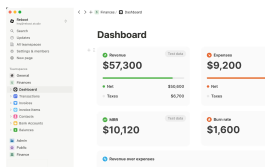Owning a cell phone repair shop means solving costly problems for your customers, like cracked screens, dead batteries, and water damage, without sending them straight to the Apple Store. But when pricing your services, how do you know what your work is worth — and how much customers will pay?
Some repairs cost just $15 in parts and take 20 minutes. Others require expensive tools, advanced skills, and hours of labor. With so many variables — parts, wages, equipment, time — it’s easy to price too low and lose profit, or too high and scare off customers.
To know what to charge for cell phone repairs, you need to understand what goes into your costs and how your point of sale (POS) system can help you stay profitable on every job.
Learn what impacts phone repair service pricing and how to set rates that support your bottom line.
What’s the Industry Average for Cell Phone Repairs?
Cell phone repair stores can be highly profitable, with margins as high as 90% on every job. But that’s only if you price repairs correctly. Where do you start, and how much are other shops charging?
Here are some industry averages to give you an idea:
-
Cell phone screen repairs: $50–$300
-
Battery replacement: $30–$100
-
Charging port repair: $40–$100
-
Water damage repair: $50–$400
-
Speaker repair: $40–$100
-
Camera repair: $30–$200
-
Software issues: $50–$150
Pricing depends on location, phone model, and extent of the damage. You need to consider your store’s specific costs and margins to decide what to charge for cell phone repairs at your location.
Determining Your Base Pricing: Know What You Spend
Once you understand industry averages, it’s time to look inward. If you want to price your repairs right, you need to know what they cost. Break down where your money goes on every job, starting with these areas.
Know Your Cost of Goods Sold
Knowing what to charge for cell phone repairs starts with what you spend on materials for each service. Cost of goods sold (COGS) includes any physical item pulled from inventory to complete or package a service. You should:
-
Track all core repair parts: Include screens, batteries, ports, and other components installed during the service.
-
Include support materials: Add adhesives, brackets, wipes, and other supplies used in the repair process.
-
Add bundled retail items: Count screen protectors and phone cases when packaged with a repair, even if offered as a freebie.
-
Watch packaging and extras: Include bags, boxes, or printed materials given with the finished repair, especially if customized or branded.
These items reduce your margins if they’re not built into your pricing.
Factor Labor Into Every Repair
Your team’s salary is one of the largest ongoing expenses. If you want to know what to charge for a cell phone repair service, you need to figure out how much you spend on labor for each one.
Here are some tips to track and manage labor costs:
-
Record hours per repair job: Log labor hours for each employee, down to the minute. This helps you see exactly how long each repair service takes, from phone battery replacements to data recovery.
-
Assign technicians to schedules: Match staff availability to demand to reduce downtime. Adjust workloads before the week begins to prevent overtime costs.
-
Automate as much as possible: Simplify tasks with your POS’s automation features — like text messages, customer notifications, or inventory alerts — and assign staff to higher-value work, like repairs or customer service.
Labor is part of your service. Price every repair to match the time and skill required to do the job.
Include Equipment and Store Overhead
All cell phone repair services take place in your store's workshop, from charging port repairs to fixing a water-damaged phone. That means the business’ overhead — its operating costs — all count when deciding what to charge.
Include these expenses when deciding your fees:
-
Record monthly expenses: Keep track of recurring costs — rent, utilities, tool depreciation, software subscriptions — with your POS system, so that you have a detailed log of your operating expenses.
-
Break down fixed costs into per-repair overhead: Calculate the number of repair services you complete in a month. Divide your monthly overhead by that number to get your per-repair overhead costs.
-
Account for shrinkage: Remember that not every repair will go as planned. Mark damaged parts, misdiagnosed issues, and returned devices as losses, and factor them into your overhead.
For example, if your shop completes 500 repairs a month and spends $5,000 on overhead, you spend $10 per repair service on overhead. Putting a number to these expenses helps you develop pricing to cover them.
Weigh Inventory Ordering Costs
Your repair pricing also depends on how much you spend to keep parts in stock. You pay for more than the cost of the part itself — ordering expenses also include time, shipping, and how efficiently you restock.
Look at the full cost of keeping inventory moving through your shop:
-
Compare supplier pricing regularly: Find out how much you pay per part, including taxes and shipping, across all suppliers. For example, one vendor might offer lower sticker prices but higher freight fees.
-
Include reorder fees or shipping surcharges: Watch for hidden costs like rush order fees, minimum order quantities, or special handling charges. These extras can increase your average cost per part.
-
Track staff time spent placing orders: Count how many minutes each process takes across vendors. Add up every call, email, and follow-up — that time affects your cost. Because every minute your techs spend chasing orders is a minute they’re not fixing phones — or making money.
Automating this process with your POS system helps you reorder parts based on stock levels and compare supplier prices. This reduces waste, saves time, and lets you avoid pricing repairs below what they cost to supply.
Measure Process Time in Your Rates
Each repair involves fixing the phone, managing intake, tracking tickets, and keeping customers in the loop. It’s not just about parts and labor. The behind-the-scenes hustle also adds up fast.
To understand your actual cost per job:
-
Log minutes spent per task: Time each step across a few repairs — intake, customer updates, technician assignment, and checkout — then calculate the average duration.
-
Convert to a labor cost: Multiply each task’s average time by your hourly labor rate (or salary divided by hours worked). This gives you the cost of that step per repair.
-
Add up your process overhead: Combine all these per-repair costs to estimate how much time-based overhead you absorb for each job.
Use a POS system built for phone repair to handle tasks like check-ins, customer updates, and job tracking for you, cutting labor and improving your margins.
Decide Your Profit Margin
To protect your margins and stay competitive, factor in repair complexity, customer expectations, and performance data from your POS.
Use the system to:
-
Identify high-performing services: Check your POS profit and loss reports to see which repair types consistently generate reliable revenue. This will help you focus on the work that adds the most value.
-
Price based on complexity: Set higher rates for time-intensive or skill-heavy jobs, like micro-soldering. Keep simpler fixes, like screen replacements, lower to stay accessible.
-
Keep pricing customer-friendly: Choose a margin that feels fair to your customers while covering your time, parts, and overhead. If people feel they’re getting good service at a reasonable rate, they’re more likely to return.
Whether your store specializes in Apple or Android phones, remember that service speed and quality make phone repair costs easier to justify. If the repairs are done quickly and your customers are happy with your work, they’ll return the next time they have a phone issue.
Determine What To Charge for Cell Phone Repairs With Cellsmart POS
Figuring out what to charge for cell phone repairs starts with knowing what each service costs your business, from the parts and labor to the time spent managing check-ins, orders, and follow-ups. When you track those costs, your pricing becomes more accurate and profitable.
CellSmart POS gives you the tools to log expenses, manage inventory, assign jobs, and review margins in one place. Use it to calculate costs, identify underperforming services, and establish rates that support your bottom line.
Request a demo today to see how CellSmart POS helps you take control of your pricing, build customer trust, and scale your business.






